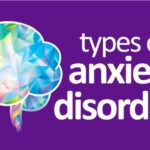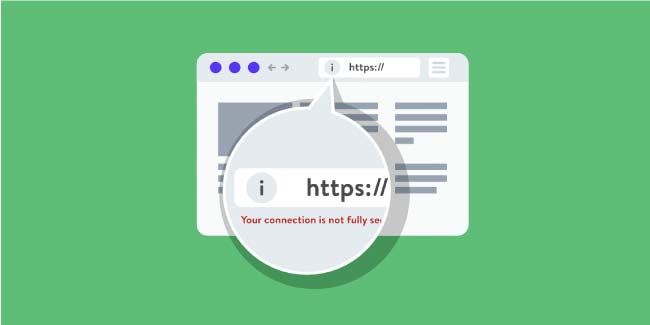
What are the Isotopes in Chemistry?
August 27, 2020
Understanding The Different Types Of Anxiety Disorders
September 3, 2020How To Discover And Fix Mixed Content Warnings On Https Sites
When your site has a valid SSL (secure sockets layer) certificate, you expect complete security and protection. But sometimes, you may see mixed content warnings on it. It is extremely annoying, and you surely want to get rid of this.
What is Mixed Content?
A mixed content warning occurs on your website if your site is loading both the secure (Https) and insecure content (Http) at the same page over an HTTPS connection. Even though the site has a valid SSL certificate, the non-secure content can be read and edited by the scammers.
An HTTPS secured site has three main benefits.
- Authentication
Makes your website visitors believe that they are safe when they visit and interact with your site’s content. If you are running an online store, then providing safety assurance to your customer is the main objective. It ensures that the site has passed the validation process and is the real site that it claims to be.
- Data Integrity
Makes your site visitors trust that their personal information, like username, passwords, credit card details, etc., are safe from the reach of the hackers. Furthermore, offer your browsers detecting capability if a hacker has altered any data which a browser receives.
- Secrecy
HTTPS prevents hackers from snooping on requests from the browser, monitoring visited sites, stealing data sent or obtained from them.
When users find mixed content warnings on any site, they may react in two ways. They will either continue their work without paying attention to these alerts or consider the caution seriously and will back out of your website immediately. All these situations are not ideal for the website owner as well as the user. The preferred choice is to make sure that your website only serves secure content. This can be done by monitoring all the content on your site.
Types of Mixed Content
Mixed content has two main types.
1) Mixed active content or mixed scripting occurs when an SSL approved site loads an insecure script file. This may ruin the security of a website completely. Browsers usually fully block this sort of mixed content.
2) Mixed passive content happens when an HTTPS secured site loads over an HTTP link, anything like an image, video, or an audio file.
Mixed active content is more dangerous than mixed passive content, as hackers can get a full charge of your site by this.
How to Discover and Fix Mixed Content Warnings on Your HTTPS Website?
If you have installed an SSL certificate on your site, then you have taken a good security approach, but this is not enough to prevent your website from mixed content. You may have an HTTPS site but still, your browser can load HTTP content along with it. So, you need to worry about it.
Follow the below-mentioned tips to find and fix mixed content warnings on your site:
1) Keep Visiting Your Website
You should keep checking your site regularly to check if you are loading unsafe content over your secured connection. Google Chrome will show you warnings if mixed content is available on your site.
To check the mixed content warning on Google Chrome, click on the webpage you want to check, then right-click and select ‘inspect’. A new window will open, click on the Console tab to see the mixed content warning. If the website’s mixed content is dangerous, then it will show up in red rows.
To fix this issue on your site, you will need to check every webpage on your website separately as the Chrome Developer tool only displays the mixed content of the selected webpage at a time. This would be hard to manage unless you do not stay on top of these problems and keep checking periodically. That is why visiting your website regularly is strongly recommended.
2) Verify URLs
Checking all the URLs is another way to identify any harmful content on your website. Though your site has an SSL certificate, you may still see some HTTP URLs. This indicates that your users will be bothered by mixed content warning and throw them off.
To fix this problem, you should make a list of all the webpages on your site that keep loading unsafe or mixed content on your site. This will help you prepare to address all the warnings you have discovered.
3) HTTP & HTTPS Comparison
When you know that mixed content is being added to your HTTPS secured site, the next thing to do is to compare the webpages of both HTTP and HTTPS (using the same URL). If both HTTP and HTTPS webpages are identical, then everything is good, and you can move on. But, if you see an alert message or the content is unavailable over HTTPS connection, then you must do one of these:
- Eliminate the tool entirely
- Add the tool, if accessible from another host
- Download the resource and host it on your website
4) Change the URL
Change the URL from http:// to https:// if your website provides the same over an HTTP and HTTPS connection. The next step is to save the source file and you are all done.
To see, if you have successfully removed mixed content from your website, again click on the webpage and check mixed content details as done before. Make sure there is no problem now.
How to Prevent Mixed Content Warning?
It may be annoying that even though your site has a valid SSL certificate, you continue to receive mixed content warning regardless of the secure connection you have. You may take these few additional steps to secure your website and your site’s visitors.
1. HTTPS URLs
You should make sure that all the webpages on your site are loading over an HTTPS connection. If you see any mixed content on your site despite your website has an SSL certificate, you need to solve this problem.
2. Content-Security-Policy-Report-Only response header
By adding the following source code to the HTTP response header, you would automatically get mixed content reports on your website. If a site visitor lands on a webpage that contains mixed content, a warning is sent to you containing the URL of the webpage and the sub-resource that violated the policy.
By monitoring these reporting endpoints, you can track all webpages’ mixed content without visiting each web page individually.
3. Online Tools
If you do not have enough time to follow the above-mentioned tips, you can use online programs to identify your website’s mixed content. Here are the four online tools that you can use:
- Why No Padlock
- HTTPS Checker
- Mixed Content Scan
- JitBit Scanner
Having a site that has a valid SSL certificate is of much importance. Top browsers alert visitors if they are visiting an insecure site. If your site has a non-secure connection, then search rankings of your website will go down. A secure connection can help you gaining site visitor’s trust. But as you see, having a valid SSL certificate is not enough; your site visitors can still see insecure content on your site. So, you need to take the time and configure mixed content on your website. I hope you got all the information regarding this topic in this article.




